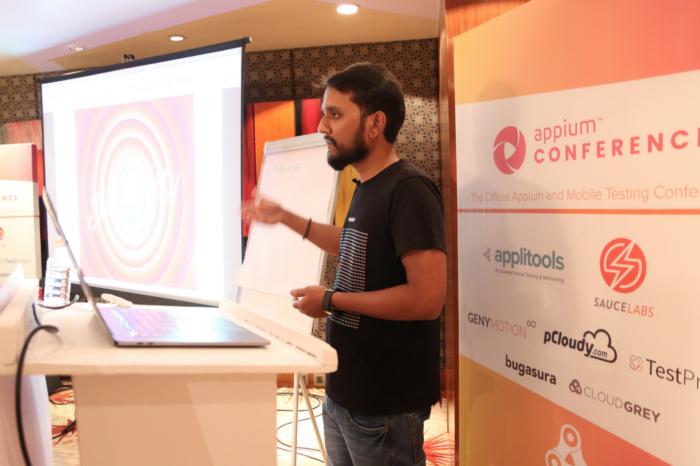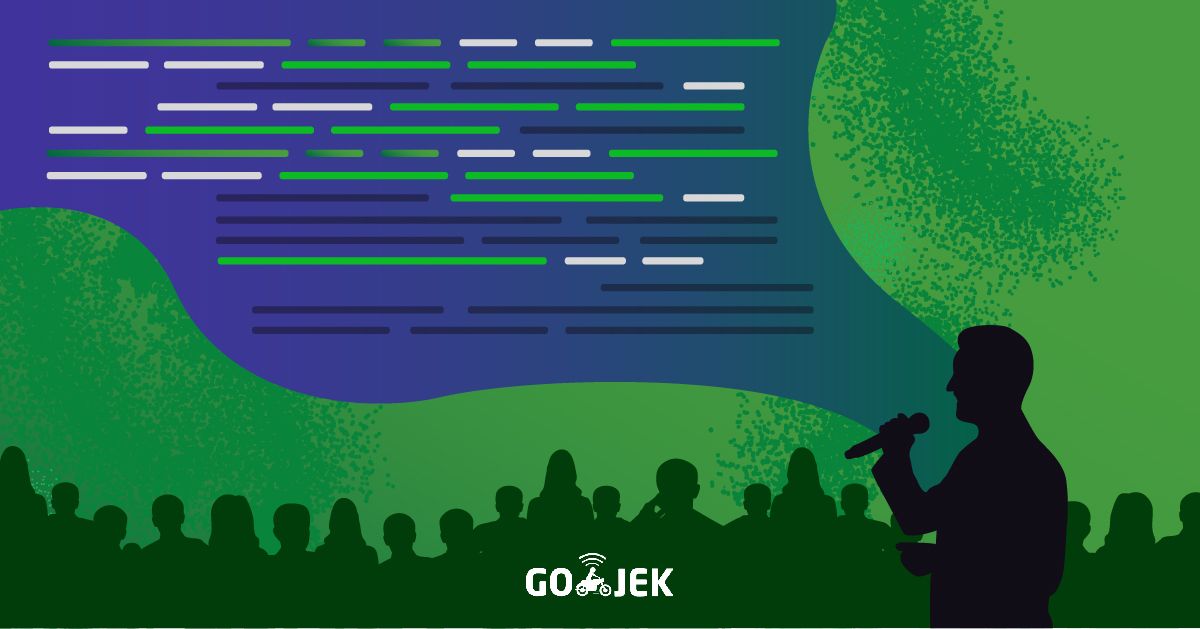By Gaurav Singh
The second edition of Appium Conf was held in Bangalore in June. The event had an impressive lineup of speakers, who had a lot of excellent insights for the community. This conference was also a landmark for me, as I presented my first conference talk there.
This post provides an inside track into the preparation and eventual delivery of a conference talk.
The motivation
What made me take the plunge? For starters, I have been following a lot of talks on different aspects of software engineering, programming, and quality. At this point, a common theme kept cropping up — most of the speakers want to share their knowledge and more importantly, give back to the community.
I have personally received so much knowledge from people who spend their personal time to create such content. This made me want to jump on to the bandwagon as well, and this talk was a way for me to do so.
I decided to present on the topic of Test Flakiness.
In case you’re interested in this topic, here’s the video:
You can find the slides here:
Why this topic?
I’ll admit, the decision-making process was not easy. There were so many different topics to choose from which could be valuable to people who work with mobile and test automation.
However, I am a bit of a productivity nerd. For me, getting the best out of the tools that we work with is quite high on my priority list. Unfortunately, many people tend to make common mistakes and get bad results while writing mobile tests with Appium.
A tool is really as good as its user.
That was when the idea for this talk erupted. I decided my goal would be to dispel common myths and give people a set of strategies to make their tests less flaky and more effective. Also, I wanted this talk to have ideas which any engineer can follow, regardless of their expertise level with mobile test automation.
Of course, I had help.
My talk was heavily inspired by a kickass series of articles written on appium pro by Appium Devs, and also by webinars given by Jonathan Lipps on the same theme.
The process
So any conference talk goes through a certain life cycle.
- Think of a suitable topic for the event and audience.
- Submit CFP (Call For Proposal) to the conference organizers (On time! )
- Hope it gets accepted.
- Upon getting accepted, prepare your talk.
- Practice it again and again.. (While avoiding procrastination as much as humanly possible)
- Deliver your talk and hopefully not screw it up
- Get feedback from the audience and conference organizers
The Dreaded CFP
For me, the topic and audience were quite clear from the beginning and it took me just a few hours to come up with an outline.
However, the moment right before submission is when the self-doubt and impostor syndrome kicked in .
What if this topic is not clear enough?
Is it really going to be valuable for the audience?
Will it even get accepted?
Given this impasse, I approached a few former colleagues to get feedback on the CFP and made some changes.
This eased my nerves a bit and finally, I Shipped the CFP
Now, it would be up to the organizers.
Here is the CFP for your reference: How to kill test flake in Appium?
Well, since you are reading this you can guess what happened?
The CFP was accepted ❇️
Preparation
And then began the actual work of preparing the content. I must admit finding time for this is not easy, but impending deadlines have a way of motivating people.
Researching the content for the talk was an enriching experience in itself, and I ended up learning more about Appium features which could be used to make tests more effective. After keeping at this, finally, the product took shape.
Next, I did what any Tester would do.
I tested the talk myself, among my friends, and even presented it as an internal talk at GOJEK to the test community. This process of taking feedback and refining the content finally led to a stage where I felt good enough about the material. A big shout out to all the folks who helped me get to this stage.
D-Day
On the day of the conference, I did a few final walkthroughs of the content to ensure all the talking points were clear in my mind.
After all the work to get here, I was able to dive right into the talk. By the time I was done, I felt it went all right, and the elation of having crossed this milestone is still fresh in my mind. Being asked some insightful questions by the audience and interacting with them was the icing on the cake.
In retrospect, giving a talk is not just a great exercise in public speaking, but also a great learning process. Hopefully, this is the first of many.

Besides giving the talk, I also managed to attend quite a few sessions by some amazing speakers and got a few useful takeaways. You can read these in more detail here.
If you found this article informative, do share it with a friend or colleague. Happy testing and coding! Cheers! ☮️



